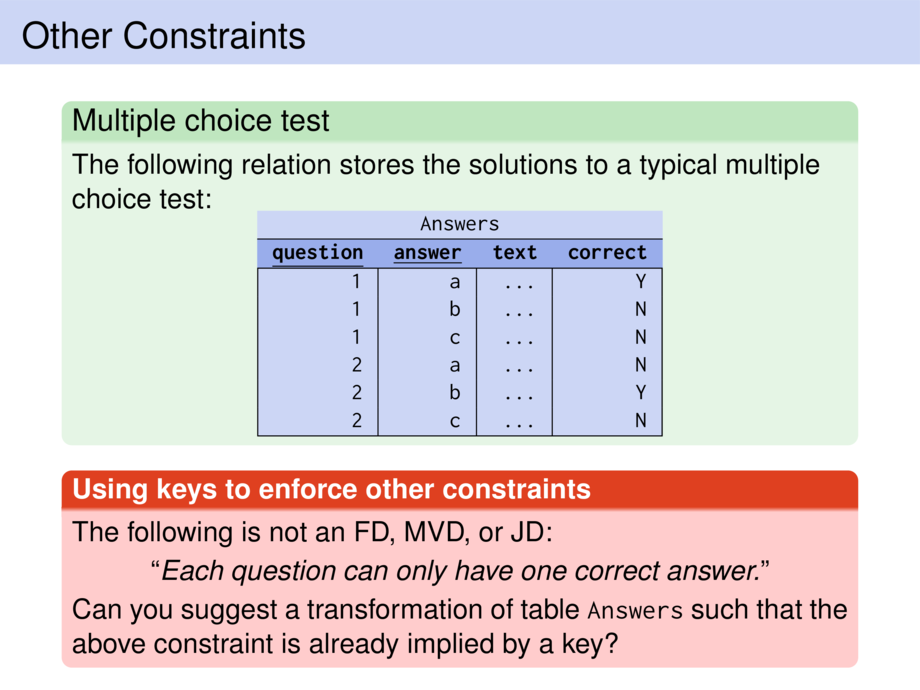



































































































288/291
\begin{frame}
\frametitle{Other Constraints}
\begin{exampleblock}{Multiple choice test}
The following relation stores the solutions to a typical
multiple choice test:
\centering\footnotesize\ttfamily
\colorbox{rellight}{%
\begin{tabular}{|r|r|r|r|}
\multicolumn{4}{c}{Answers}
\\
\hline
\hd{\underline{question}} & \hd{\underline{answer}} & \hd{text}
& \hd{correct}
\\
\hline
1 & a & ... & Y \\
1 & b & ... & N \\
1 & c & ... & N \\
2 & a & ... & N \\
2 & b & ... & Y \\
2 & c & ... & N \\
\hline
\end{tabular}%
}
\end{exampleblock}
\medskip
\begin{quiz}{\textwidth}{Using keys to enforce other constraints}
The following is not an FD, MVD, or JD:
\begin{tcenter}
``\textit{Each question can only have one correct answer.}''
\end{tcenter}
Can you suggest a transformation of table \sql{Answers} such
that the above constraint is already implied by a key?
\end{quiz}
%% Split ANSWERS vertically into
%% CORRECT_ANSWERS(QUESTION,ANSWER,TEXT) key: QUESTION
%% and
%% WRONG_ANSWERS(QUESTION,ANSWER,TEXT) key: QUESTION,ANSWER
%%
%% The key in CORRECT_ANSWERS ensures that only one entry is made for
%% each question (multiple wrong answers may be recorded in
%% WRONG_ANSWERS).
%%
%% New inter-relational constraint needed: same question with same
%% answer may not appear in both tables
\end{frame}

